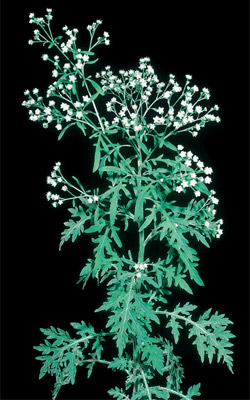
April 3, 2014
South Burnett landholders are being urged to keep an eye out for parthenium, especially along river banks and on flood plains, after seed was potentially spread during last year’s floods.
The Burnett Catchment Care Association and the Burnett Mary River Group are working with landholders to raise awareness of the problem.
Weed inspectors have been walking some of the banks of the Boyne River and Barambah Creek looking for weeds.
According to the “Burnett Buzz” – the newsletter of the Burnett Catchment Care Association – so far reports have been good, suggesting Barambah Creek may have no or very little parthenium.
Parthenium has been a focus for local weed eradication efforts for some time.
In June last year, the South Burnett Regional Council’s natural resource management spokesperson Cr Kathy Duff said BMRG had provided $16,000 to clear the South Burnett of parthenium.
“This is a follow up from the previous treatment when parthenium became a big problem after the floods in 2011 and 2012,” she said at the time.
In 2011, the South Burnett Regional Council contributed $24,000 to help treat an outbreak of parthenium along Barambah Creek after seeds were distributed by floodwaters along about 80km of creek banks and across flats.
Native to South and North America, Parthenium hysterophorus was first recorded at Toogoolawah in 1955.
It can cause dermatitis and respiratory problems in humans and dermatitis in cattle and domestic animals.
It is declared a Class 2 pest plant under Queensland legislation.
There are some bio-control agents for parthenium available which are being bred by the North Burnett Landcare group.























